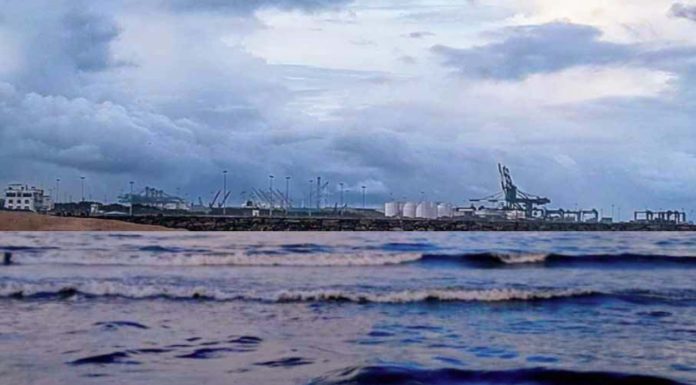- The US plans to raise tariffs on $200 billion of Chinese goods to 25% from 10% if trade negotiations with Beijing did not yield an agreement.
- Both China and the U.S. confirmed that their talk had “substantial progress” on important structural issues, and scheduled increase in tariffs delayed.
- China imposed a 10% retaliatory tariff on US LNG imports effective September 24, but does not yet have any tariffs on US crude.
- US crude exports to Asia are set to swell over March and April, aided by a drop in freight rates and arbitrage economics.
- China ended 2018 with zero crude shipments from the US in December due to trade tensions.
- Total supplies of US crude in 2018 posted a sharp increase of 60.4% on the year to 247,624 b/d.
An extension of the deadline for US tariffs on Chinese imports is likely to boost LNG and crude oil trade, reports Platts.
Easing trade tensions
An extension of the deadline for US tariffs on Chinese imports is likely to boost trade flows of crude oil and LNG, especially if it leads to an easing of trade tensions in the longer term, said traders and other market participants.
The US was scheduled to raise tariffs on $200 billion of Chinese goods to 25% from 10% if trade negotiations with Beijing did not yield an agreement.
This would have triggered retaliatory tariffs by China, impacting US crude and LNG exports to the country, among other commodities.
U.S. China high-level trade talks
State-backed news agency Xinhua said the two countries had made “substantial progress on specific issues concerning technology transfer, intellectual property protection, non-tariff barriers, services and agriculture sectors, as well as exchange rates during the seventh high-level trade talks.”
Last week, China’s Vice Premier Liu He led a trade delegation to Washington and held talks with US Trade Representative Robert Lighthizer and US President Donald Trump in the White House.
There was “substantial progress” in talks with China “on important structural issues including intellectual property protection, technology transfer, agriculture, services, currency and many other issues,” Trump said Sunday on Twitter.
Increase in tariffs delayed
As a result of these very productive talks, Trump said, he will be delaying the US increase in tariffs now scheduled, adding that an agreement could be reached at a summit with Chinese President Xi Jinping at his Mar-a-Lago resort.
Neither Trump nor Chinese state media have specified the duration of the extension. While market participants looked forward to a trade agreement, there was uncertainty over the lack of detail and wider unresolved differences between Beijing and Washington.
Crude oil and LNG arbitrage
Meanwhile, market fundamentals indicate that ramping up exports to China could be easier for US crude than for LNG, as Asian LNG markets remain weak. China imposed a 10% retaliatory tariff on US LNG imports effective September 24, but does not yet have any tariffs on US crude.
“We expect more US crude to come to China as a result of Beijing’s promise to increase US energy imports,” a Beijing-based trader said.
Crude export swell
US crude exports to Asia are set to swell over March and April, aided by a drop in freight rates and arbitrage economics, as various flagship North American export grades have been trading at a discount to comparable light and medium Asian and Persian Gulf grades, S&P Global Platts reported earlier this month.
Around 17 VLCCs were fixed to load crude from the US Gulf Coast to the East for February-loading cargoes, shipping reports showed, with many more likely booked outside of reported fixtures.
Comparatively, there were 16 VLCC cargoes in January and only seven in December, according to Platts vessel tracking software cFlow and shipping reports.
Crude shipments in 2018
Northeast Asia and India typically absorb the bulk of US crude deliveries to Asia, though small volumes are occasionally seen going to Southeast Asian countries such as Thailand, Malaysia and Singapore. US crude purchases by Unipec, the trading arm of Chinese oil major Sinopec, remained minimal.
China ended 2018 with zero crude shipments from the US in December due to trade tensions. Its total supplies of US crude in 2018 posted a sharp increase of 60.4% on the year to 247,624 b/d.
A Suezmax-sized vessel, Arctic, loaded 1.09 million barrels of crude from the Pacific Lightering area in the US west coast and sailed on December 25, discharging at Zhoushan in eastern China on January 15, cFlow data showed.
This indicates oil firms took the opportunity to bring US crude oil into China during a short window amid the trade talks.
Weak Asian LNG prices
Meanwhile, Asian LNG prices are too weak to support arbitrage flows from the US, although market participants indicated optimism about the final outcome of the trade talks. The Platts JKM for April delivery cargoes was assessed at $6.225/MMBtu Friday.
China received only two LNG cargoes from the US in January, on board the Hoegh Giant and Clan Vision, and no US cargoes were delivered to China in December, according to cFlow. At least one US LNG cargo was delivered to China November, on the Ribera Del Duero Knutsen from Cheniere Energy’s Sabine Pass LNG.
Did you subscribe for our daily newsletter?
It’s Free! Click here to Subscribe!
Source: Platts





















